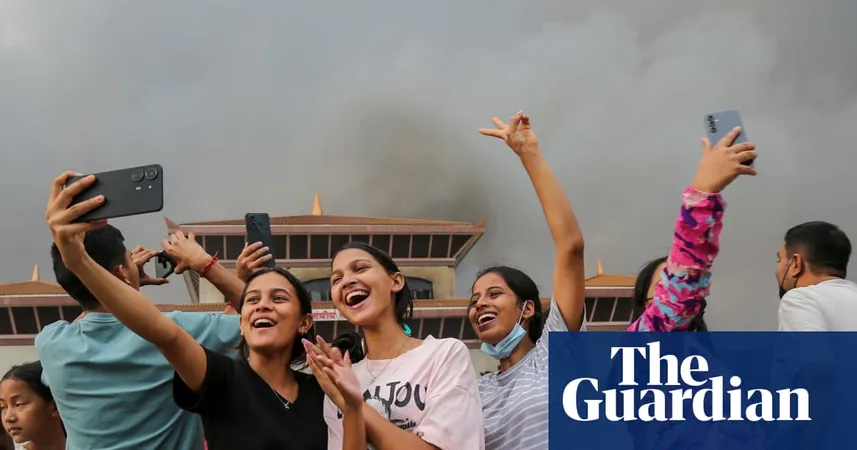
Nepal’s Gen Z Protests: A Bold Stand Against Corruption as Young Lives Hang in the Balance
2025-09-10
Author: Jia
In the heart of Kathmandu, a chilling scene unfolds—a whiteboard listing the names of young hospital patients, each age a stark reminder of a protest turned tragic. Ages 18, 20, 22, and 23 fill the board, reflecting a generation caught in a life-and-death struggle for justice.
After violent clashes on Monday, scores of young protesters are now receiving treatment for gunshot wounds inflicted by police amidst a mass uprising against rampant government corruption and a bewildering ban on social media. The toll? At least 22 lives lost and countless injuries.
From his hospital bed, Saurav, an 18-year-old student, expressed his outrage, declaring, "We shouldn't need motivation to fight for our country. Politicians are selling it for their own greed; that's unacceptable!" His call to action resonates deeply within a generation long fed up with the status quo.
While the protests surged, Saurav recounted a horrific moment—a fellow protester shot dead before his eyes. As chaos erupted, he too felt the sting of pellets, crying out as friends rushed him to safety. "Killing innocent people isn’t humanity; it’s grotesque," he lamented.
By Tuesday afternoon, a seismic shift occurred—Prime Minister KP Sharma Oli resigned, igniting spontaneous celebrations across the city. While many viewed this as a win against systemic corruption, the loss of young lives cast a dark cloud over the jubilation.
For the past decade, Nepal has seen a triad of aging leaders ruling in tandem, leaving a generation of youth disillusioned by corruption and a lack of genuine progress. Last week’s protests, ignited by an oppressive internet ban, were merely the final straw in a long history of grievances.
As the afternoon wore on, streets filled with defiant protesters chanting slogans and waving the Nepali flag, despite government curfews. Calls for justice became personal, with messages demanding retribution for the blood spilled.
The protests culminated in a storming of Singha Durbar, the government complex, where chaos reigned. Smoke billowed into the air as protesters celebrated their moment, some even riding on top of police vehicles, declaring this a new chapter in their nation’s history. "This is a revolution! It’s our turn now!" exclaimed Sujan Dahal, captured by the energy of the crowd.
However, the day ended in shock, as devastation left scars on the city and raised a grim realization of potential violence and sabotage from groups seeking chaos.
A worried protester acknowledged, "This isn’t good for us, despite our victory. We should aim for peace, not destruction." The city's picturesque facade now lies in ruins, with burnt buildings decorated across Kathmandu.
As stringent curfews and military presence suffocate the city, the future of Nepal remains uncertain. Yet, amidst the smoke and debris, whispers of hope flicker. Saurav, recovering from his wounds, holds onto a vision: if young leaders seize the reins, Nepal can thrive. "We are not driven by greed. We envision a brighter future for our nation."




 Brasil (PT)
Brasil (PT)
 Canada (EN)
Canada (EN)
 Chile (ES)
Chile (ES)
 Česko (CS)
Česko (CS)
 대한민국 (KO)
대한민국 (KO)
 España (ES)
España (ES)
 France (FR)
France (FR)
 Hong Kong (EN)
Hong Kong (EN)
 Italia (IT)
Italia (IT)
 日本 (JA)
日本 (JA)
 Magyarország (HU)
Magyarország (HU)
 Norge (NO)
Norge (NO)
 Polska (PL)
Polska (PL)
 Schweiz (DE)
Schweiz (DE)
 Singapore (EN)
Singapore (EN)
 Sverige (SV)
Sverige (SV)
 Suomi (FI)
Suomi (FI)
 Türkiye (TR)
Türkiye (TR)
 الإمارات العربية المتحدة (AR)
الإمارات العربية المتحدة (AR)